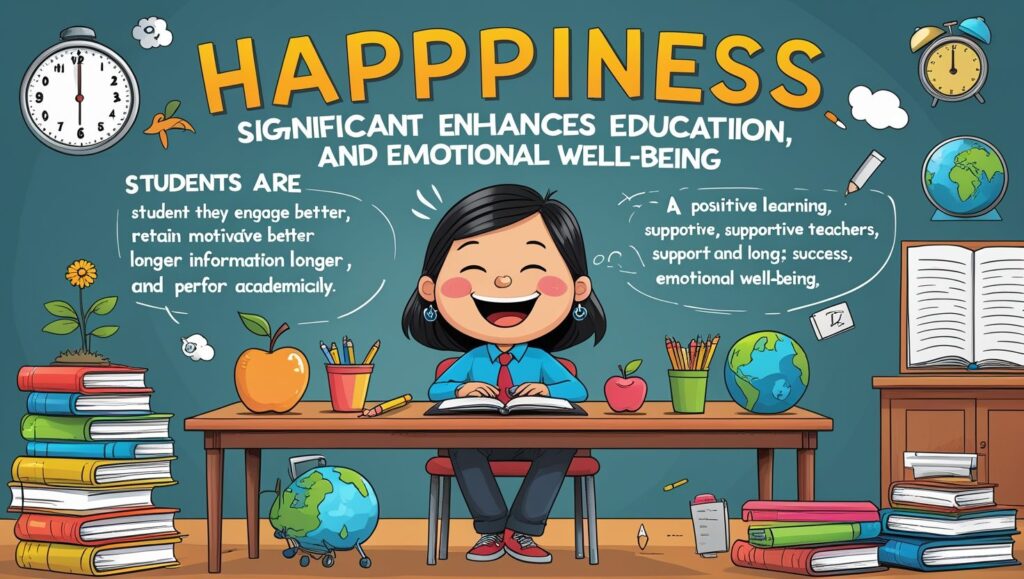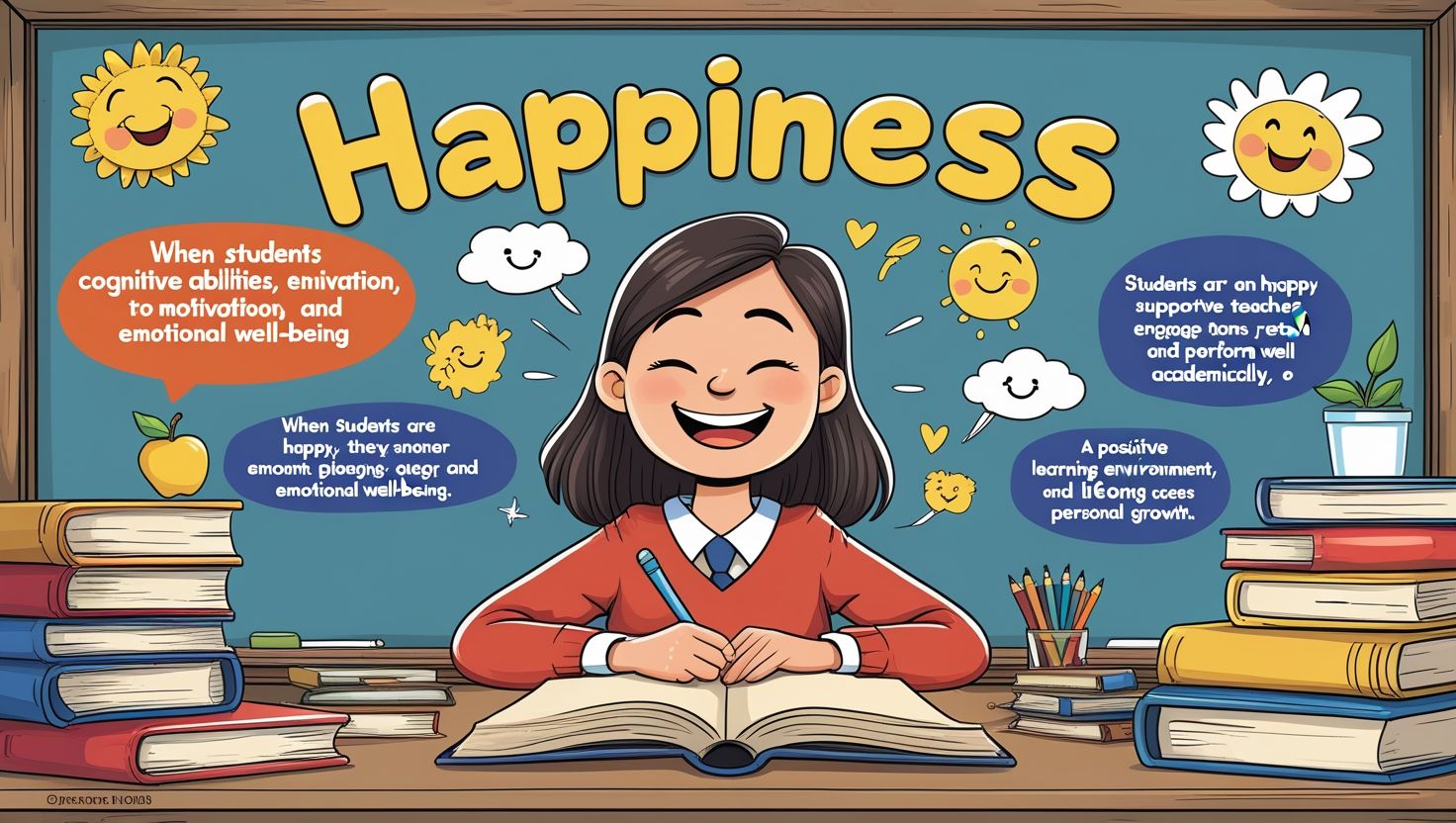Introduction
The Impact of Happiness on Education, Happiness is a fundamental human emotion that significantly influences cognitive functions, motivation, and overall well-being. In the context of education, happiness plays a crucial role in shaping students’ academic performance, engagement, and long-term success. Research in psychology and education has consistently shown that happy students are more creative, resilient, and better at problem-solving than their stressed or unhappy peers.
This article explores the impact of happiness on education by examining its effects on learning, memory retention, student-teacher relationships, and classroom dynamics. Additionally, it discusses strategies that educators and institutions can implement to foster a positive and joyful learning environment.
1. The Psychological and Neurological Basis of Happiness in Learning
Happiness is associated with the release of neurotransmitters such as dopamine, serotonin, and endorphins, which enhance cognitive functions. When students are happy:
- Dopamine improves motivation and reward-based learning.
- Serotonin regulates mood, reducing anxiety and depression.
- Endorphins lower stress levels, allowing for better focus.
Neurologically, a positive emotional state activates the prefrontal cortex, which is responsible for critical thinking, decision-making, and problem-solving. In contrast, stress and negativity trigger the amygdala, leading to fight-or-flight responses that hinder learning.
Key Findings:
- Happy students have better memory retention (Fredrickson, 2001).
- Positive emotions broaden cognitive resources (Broaden-and-Build Theory).
- Chronic stress impairs hippocampus function, affecting long-term memory.
2. Happiness and Academic Performance
Multiple studies have established a strong correlation between happiness and academic success. Students who experience positive emotions are more likely to:
- Engage Actively in Class: Happy students participate more, ask questions, and collaborate effectively.
- Achieve Higher Grades: Reduced stress leads to better exam performance.
- Develop Growth Mindsets: They view challenges as opportunities rather than obstacles.
A study by the University of Oxford (2019) found that students who reported higher happiness levels scored 10-15% higher in standardized tests than their less happy peers.

Case Study: Finland’s Education System
Finland, consistently ranked among the happiest countries, also boasts one of the best education systems globally. Key factors include:
- Minimal standardized testing.
- Emphasis on play and creativity.
- Strong student-teacher relationships.
This model highlights how happiness-driven education leads to better outcomes.
3. The Role of Teachers in Fostering Happiness
Teachers are pivotal in creating a joyful classroom environment. Strategies include:
- Positive Reinforcement: Encouraging effort rather than just results.
- Mindfulness Practices: Short meditation or breathing exercises to reduce stress.
- Humour and Storytelling: Making lessons engaging and relatable.
A study by Hattie (2017) found that teachers who exhibited warmth and enthusiasm had students with higher motivation and achievement levels.
4. School Environment and Institutional Policies
Educational institutions can promote happiness through:
- Reducing Excessive Homework: Overburdening students leads to burnout.
- Encouraging Physical Activity: Exercise releases endorphins, improving mood.
- Implementing Social-Emotional Learning (SEL) Programs: Teaching empathy, resilience, and emotional regulation.
Schools like Singapore’s “Positive Education” framework integrate well-being into curricula, resulting in improved student satisfaction and performance.

5. Challenges and Counterarguments
While happiness enhances learning, critics argue:
- Overemphasis on Happiness May Neglect Discipline: Some believe struggle is necessary for growth.
- Cultural Differences: Not all societies prioritize happiness in education.
However, evidence suggests that balanced approaches (combining well-being with academic rigor) yield the best results.
Conclusion
Happiness is not just a fleeting emotion but a vital component of effective education. By fostering positive emotions, schools can enhance learning, improve academic outcomes, and prepare students for lifelong success. Policymakers, educators, and parents must work together to create environments where joy and learning coexist.
Recommendations for Future Implementation:
- Incorporate happiness metrics in school assessments.
- Train teachers in positive psychology techniques.
- Design curricula that balance academics with emotional well-being.

8 thoughts on “The Impact of Happiness on Education”
Comments are closed.